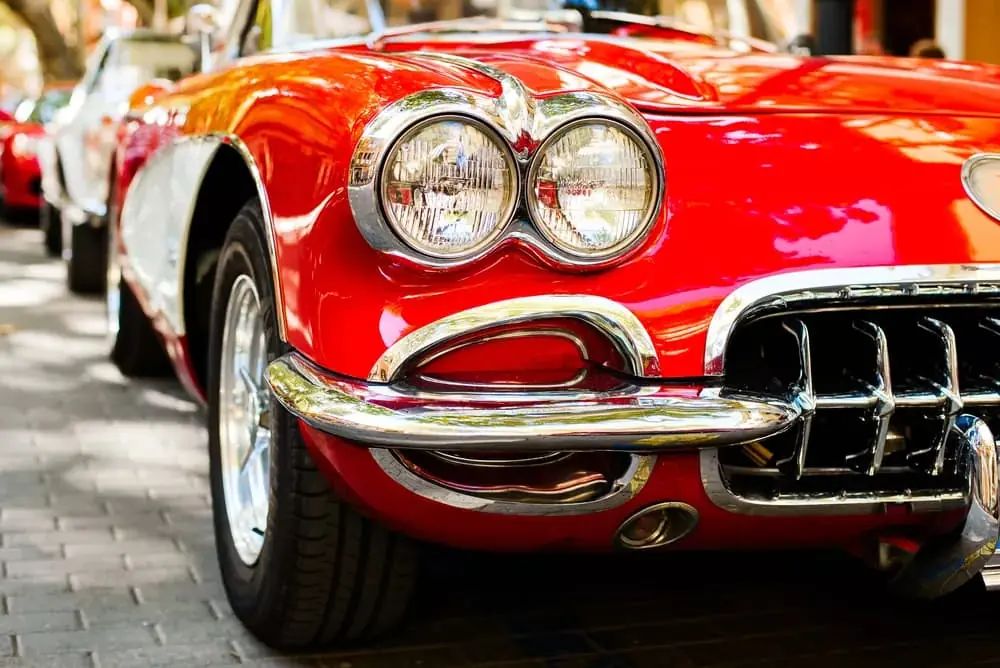
The automotive world, often romanticized for its sleek designs and roaring engines, is in truth a vibrant battlefield. It’s a realm where “wars without weapons” are fought, not with bombs or traditional tactics, but with cutting-edge ideas, relentless innovation, and a fervent pursuit of speed and excellence. These aren’t just commercial competitions; they are clashes of egos, pride, and the most advanced machines humanity can engineer, with the ultimate victory often decided by sales figures, race track dominance, and the sheer force of technological superiority.
Indeed, these automaker rivalries are the very crucible in which the history and progress of automobiles have been forged, profoundly shaping our understanding of what a car can be and how it evolves. The competitive spirit extends far beyond just the visionary leaders like Enzo Ferrari or Henry Ford; it is a collective effort driven by engineers, designers, technicians, and countless skilled professionals. Their collective contributions have not only pushed the boundaries of engineering and performance but have also ignited an enduring passion among car enthusiasts worldwide.
From legendary battles on the race track to iconic showroom clashes and captivating ad campaigns, these rivalries have fueled the competitive spirit of manufacturers and drivers alike, leaving an indelible mark on automotive history. As we take a spin through some of the most intense car rivalries, we’ll uncover the fierce competition, the technological leaps, and the captivating stories that have steered the industry toward new horizons, ultimately benefiting every driver on the road.
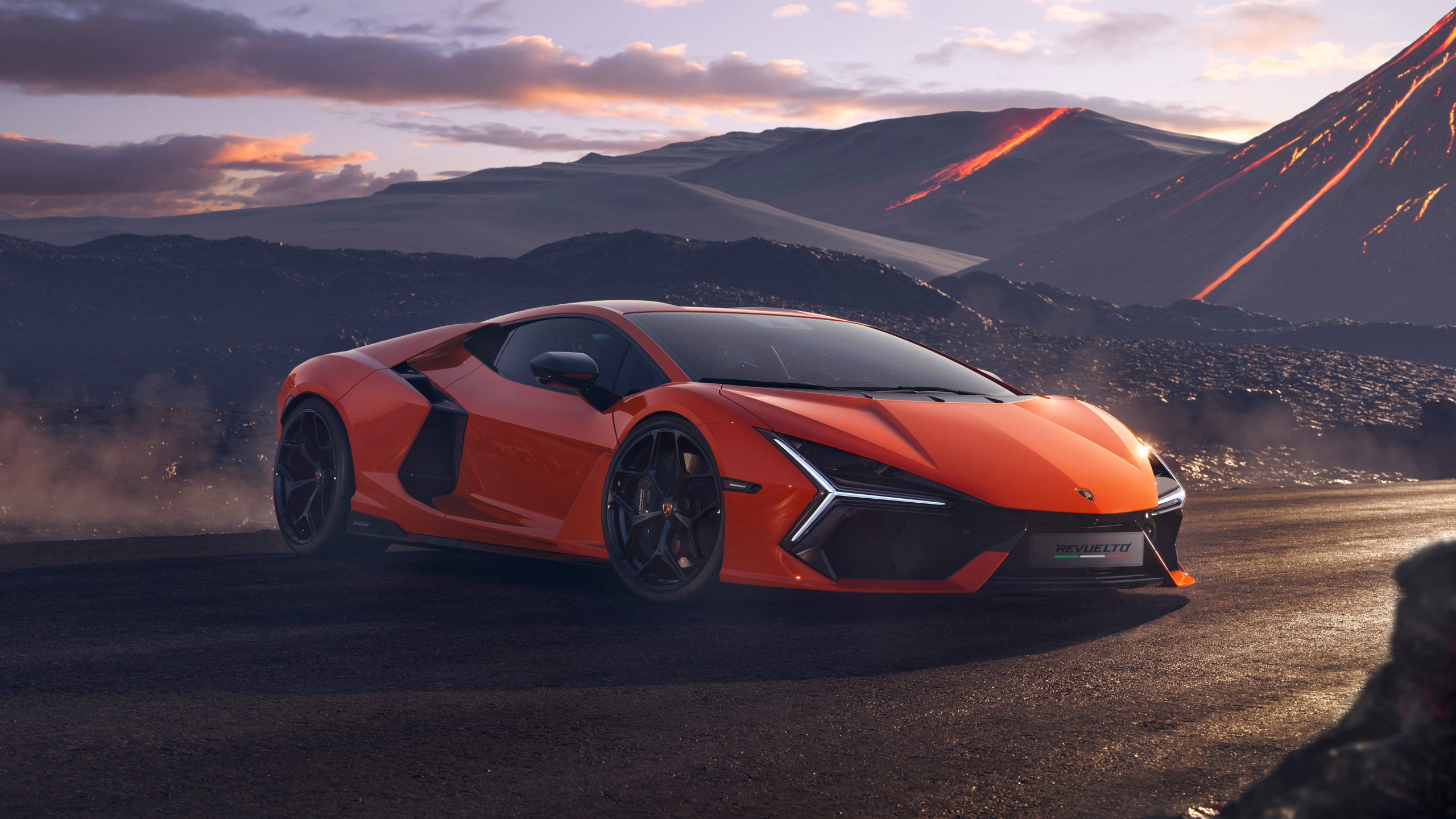
1. **Lamborghini vs. Ferrari Turned Supercars into Art**The rivalry between Lamborghini and Ferrari is truly a legend, steeped as much in the personalities of their founders as in the cars themselves. It famously began when Ferruccio Lamborghini, a successful tractor manufacturer, decided to build his own supercar after a memorable disagreement with Enzo Ferrari. This personal spat wasn’t just a minor squabble; it was the spark that ignited the birth of Lamborghini and initiated a rivalry that would fundamentally transform the entire supercar landscape.
Ferrari’s long-standing racing pedigree inadvertently pushed Lamborghini to concentrate on creating vehicles with incredibly bold designs and truly outrageous performance, as mentioned by Gran Turismo Events. This dynamic forced each brand to constantly outdo the other, raising the bar for what consumers could expect from a high-performance machine. The competitive tension was palpable, driving both companies to new heights of automotive artistry and engineering.
Lamborghini introduced iconic models such as the Miura, the Countach, and later the Aventador, each setting groundbreaking new standards for what a supercar could embody. These revolutionary designs, in turn, compelled Ferrari to innovate fiercely with its own legendary models, including the 288 GTO and the F40. The relentless pursuit of superior speed, distinctive style, and unparalleled exclusivity by both marques has been a powerful catalyst, leading to significant breakthroughs in areas like aerodynamics, advanced materials, and sophisticated engine technology.
Thanks to this enduring and intense battle, supercars have transcended their role as mere vehicles of speed; they have become acclaimed as rolling works of art. They are admired just as much for their breathtaking beauty and sculptural form as they are for their blistering performance capabilities. This rivalry has undoubtedly enriched the automotive world, making every new release from either brand a highly anticipated event.
Read more about: Level Up Your Ride: The Ultimate Guide to 2025’s Hottest Custom Wheel Trends That Are Changing the Game
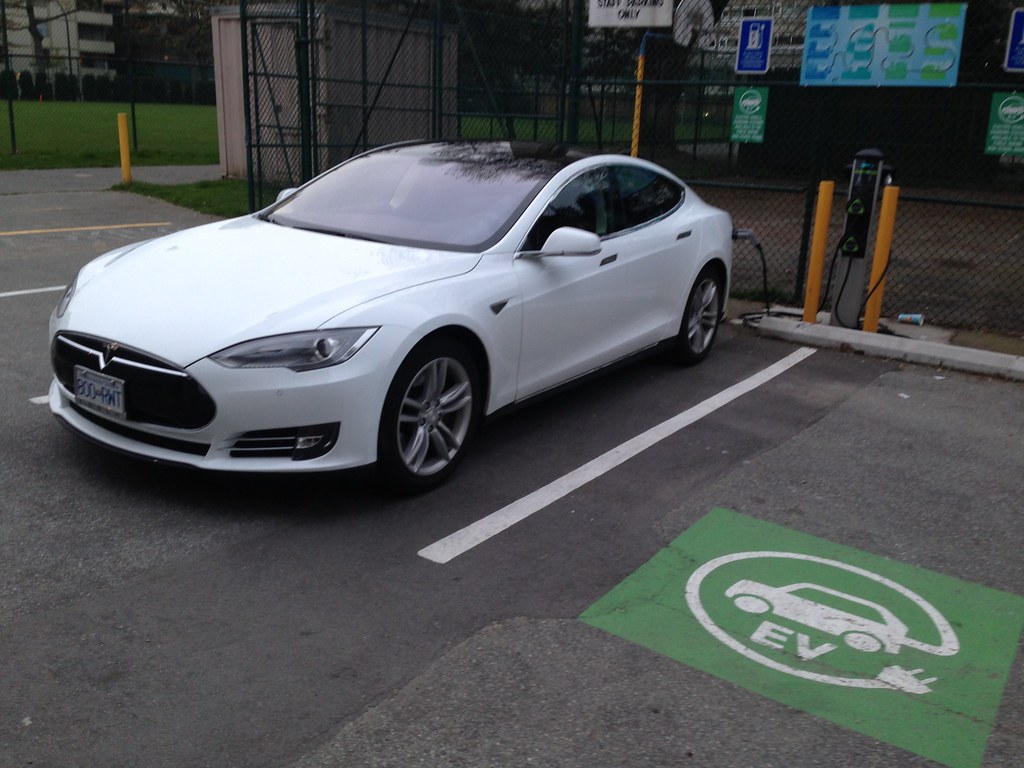
2. **Tesla vs. Legacy Automakers Supercharged the Electric Revolution**When Tesla dramatically burst onto the automotive scene, its disruptive presence sent shockwaves throughout the established industry, compelling traditional automakers to sit up and take serious notice. Elon Musk’s audacious vision for electric vehicles was not merely about creating new cars; it was about fundamentally reimagining personal transportation. This bold stance forced legacy brands to significantly accelerate their own electric vehicle (EV) programs, sparking an entirely new kind of rivalry centered intensely on crucial metrics like range, charging speed, and the sophistication of autonomous features.
Tesla immediately set groundbreaking new benchmarks with its innovative approach, including the introduction of seamless over-the-air updates, minimalist and futuristic interior designs, and truly rapid acceleration capabilities that redefined performance expectations for electric cars. These advancements served as a clear challenge, prompting established companies such as Volkswagen, Ford, and General Motors to commit substantial investments in developing robust electric platforms and cutting-edge battery technology. The pressure was on to match and eventually surpass Tesla’s perceived advantages.
This fierce competition has undeniably led to an extraordinary wave of innovation across the entire automotive sector, transforming electric vehicles from niche products into increasingly accessible and highly appealing options for mainstream buyers. The rapid pace of development has resulted in more efficient batteries, faster charging infrastructure, and a broader array of EV models that cater to diverse consumer needs and preferences.
Consequently, the rapid transition to electric mobility is unfolding at a pace far quicker than many industry observers initially anticipated. Consumers are directly reaping the extensive benefits of this invigorated competition, enjoying a wider array of choices, more sophisticated technologies, and steadily improving overall performance in the electric vehicle market as a direct result of this ongoing and transformative rivalry.
Read more about: 12 Legendary Automotive Rivalries That Revolutionized the Roads and Fueled Innovation
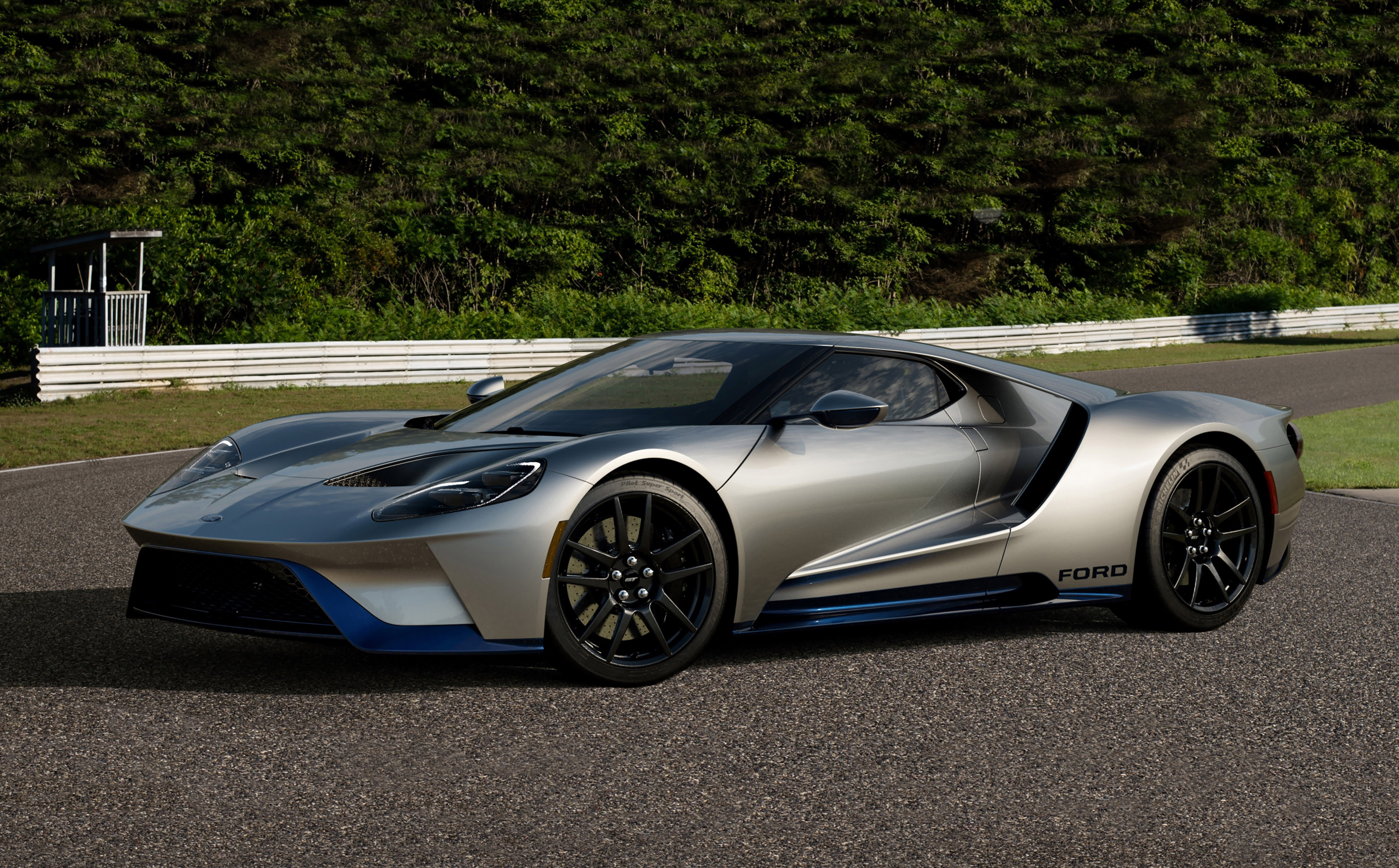
3. **Ford vs. General Motors/Chevy Fueled the American Automotive Identity**Few rivalries in American industry are as deeply entrenched and historically significant as that between Ford and General Motors/Chevy. This epic confrontation, widely regarded as the most heated and influential automaker rivalry in history, began as early as 1928, during the pioneering days of Henry Ford and Louis Chevrolet. At that time, Ford already commanded the pinnacle of the automobile industry, while Chevrolet was an emerging talent, a promising young race car driver with ambitions to match.
The early sparks of this rivalry ignited when Louis Chevrolet, in a partnership with Will Durant, saw his venture lead to the acquisition of General Motors. A pivotal moment arrived in 1928, when GM achieved a significant milestone by creating the first engine capable of surpassing the speed of Ford’s iconic Model T. This early triumph signaled the beginning of decades of intense competition, with both manufacturers tirelessly striving to outdo each other in the relentless pursuit of building the fastest and most desirable cars possible.
The horsepower war intensified dramatically with a series of landmark releases. GM seized a crucial advantage by unveiling the Corvette in 1953, a vehicle that quickly became an icon of American sports car performance. Ford, however, soon reclaimed the upper hand with the monumental introduction of the Mustang in 1962, which instantly captivated a generation. Chevrolet responded directly in 1966 with the launch of the Camaro, a move that solidified a legendary feud; the Camaro vs. Mustang debate continues to rage passionately among car enthusiasts to this very day.
As the 21st century dawned, this rivalry evolved, with pickup trucks emerging as a defining battleground. The Ford F-Series and the Chevrolet Silverado have become the two most successful truck lines ever produced, dominating the lucrative segment. The recent introduction of the Ford F-150 Lighting, an all-electric pickup, marks a potential new turning point, indicating that both automakers are increasingly focusing their competitive energies on electric vehicle production, promising another fascinating chapter in this enduring American saga.

4. **Audi vs. BMW in the Battle for Tech-Savvy Drivers**Audi and BMW have been locked in what can best be described as a high-stakes, high-tech arms race for many years, with each prestigious German automaker continually striving to outdo the other with the latest advancements in gadgets and sophisticated driving aids. This rivalry isn’t just about raw power or luxury appointments; it’s a relentless pursuit of technological superiority aimed squarely at appealing to the increasingly tech-savvy driver.
Audi made significant early strides with its pioneering adoption of all-wheel drive systems and innovative digital displays, features that quickly set a formidable new standard in the luxury car segment. These advancements positioned Audi as a leader in integrated technology, compelling BMW to elevate its game considerably. BMW responded with its own suite of impressive innovations, including advanced infotainment systems and cutting-edge driver-assist features, as noted by Motor Trend, showcasing its commitment to equally sophisticated in-car experiences.
This intense competition has been a powerful catalyst for the rapid evolution of automotive technology across the industry. It has driven advancements ranging from the immersive experience of virtual cockpits to the sophisticated capabilities of semi-autonomous driving systems. Every new model from either brand often introduces a feature that forces the other to innovate, creating a cycle of continuous improvement that benefits consumers.
Today, both brands offer vehicles that are comprehensively packed with state-of-the-art connectivity options, enhanced safety features, and a wide array of entertainment systems, all designed to make the driving experience both more enjoyable and incredibly convenient. Audi and BMW have definitively shown that innovation in the automotive world isn’t solely about achieving greater speed; making cars smarter, safer, and more delightful to interact with can be just as exciting and impactful for the discerning driver.
Read more about: 12 Legendary Automotive Rivalries That Revolutionized the Roads and Fueled Innovation
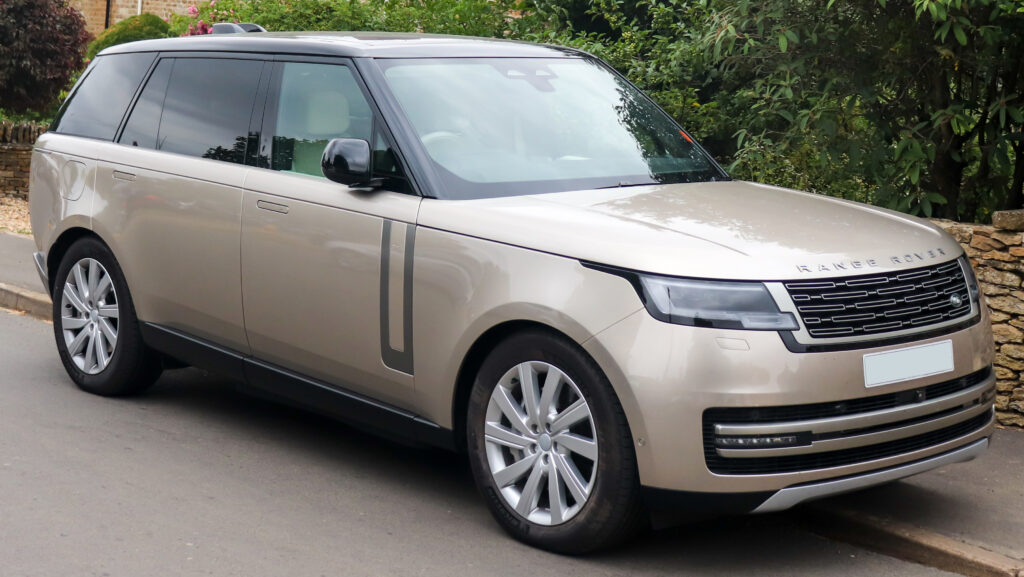
5. **Land Rover vs. Jeep Defined Off-Road Capability**Since the transformative post-war era, Land Rover and Jeep have been inextricably locked in a compelling battle for undisputed off-road supremacy. This rivalry is not merely about market share; it’s about defining what true go-anywhere capability means and pushing the boundaries of rugged performance. Each brand, with its distinct philosophy, has spurred the other to greater achievements in conquering the world’s most challenging terrains.
Jeep’s foundational reputation was built on its rugged simplicity and an uncompromising, go-anywhere attitude, features that resonated deeply with adventurers and utilitarian users alike. This core ethos directly challenged and, in turn, pushed Land Rover to develop vehicles that expertly blended luxurious comfort with formidable capability, effectively creating machines that could tackle the toughest trails in sophisticated style. The competition refined the very concept of a premium off-roader.
As a direct result of this persistent rivalry, both brands have been instrumental in introducing groundbreaking innovations that have become industry standards. These include advanced four-wheel-drive systems, sophisticated terrain response controls that adapt to various surfaces, and incredibly durable suspension setups designed to withstand extreme punishment. Their ongoing competition has collectively set the definitive standard for what an off-roader should truly embody, inspiring countless imitators and a passionate global community of enthusiasts, as stated in this JK-Forum post.
Today, a diverse range of adventurers and weekend warriors alike reap the significant benefits of this historical competition. They enjoy access to vehicles that are remarkably comfortable on smooth highways, yet possess the inherent capability to confidently navigate the most challenging off-road trails. This duality is a direct legacy of the unwavering push for off-road excellence driven by the continuous innovation and competition between Land Rover and Jeep.
Read more about: Seriously, What Happened? 13 Once-Favorite 4x4s That Off-Roaders Now View With Suspicion (And Why!)
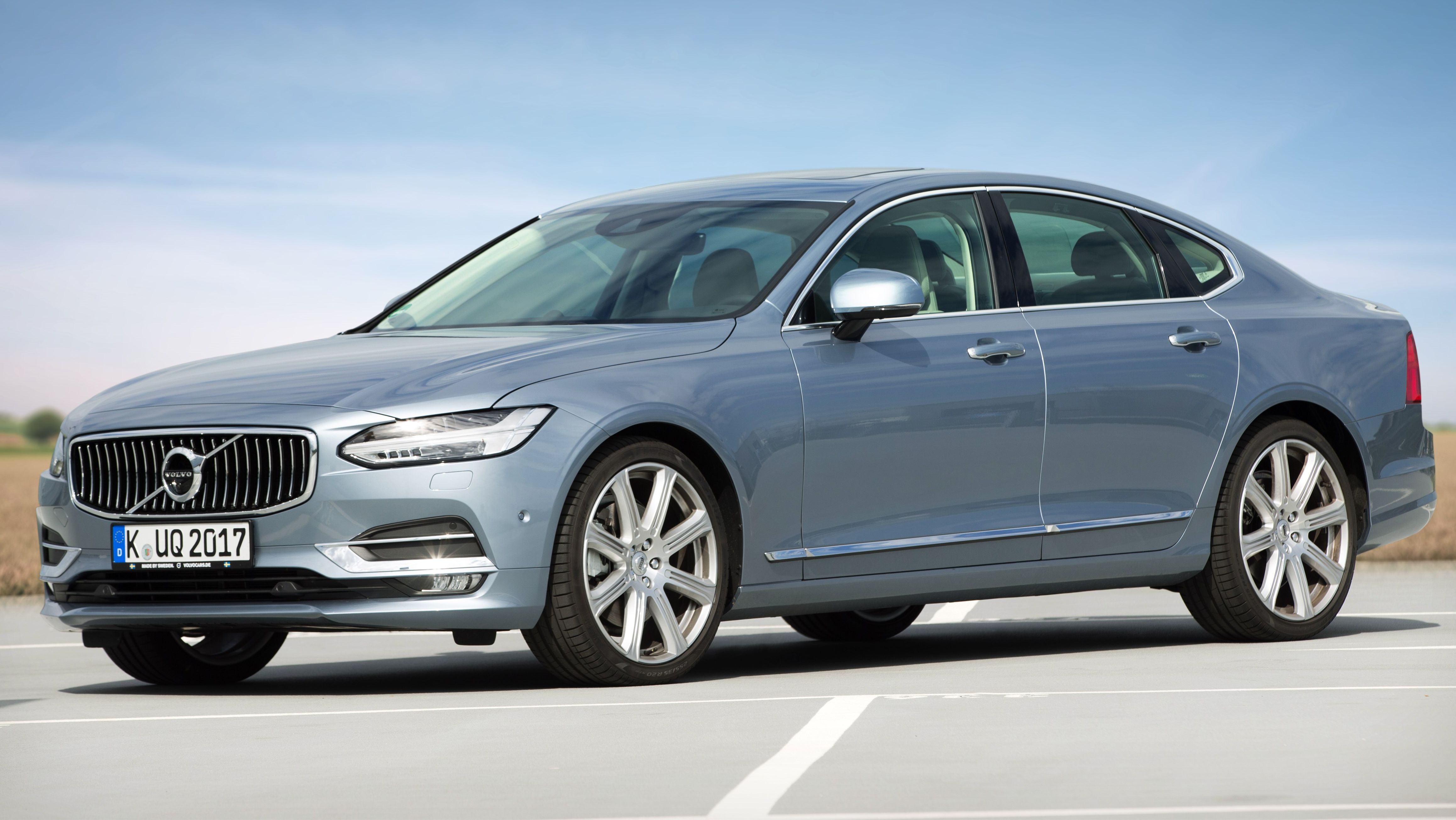
6. **Volvo vs. Saab Put Safety at Center Stage**In the realm of automotive innovation, few rivalries have yielded such profoundly beneficial outcomes as that between Sweden’s two most prominent carmakers, Volvo and Saab. For decades, these two brands engaged in a dedicated competition, each striving to build the safest cars available on the road, effectively placing occupant protection at the absolute forefront of automotive design and engineering. Their shared commitment elevated safety from a mere feature to a core philosophy.
Volvo, with its long-standing and unwavering focus on pioneering crash protection and groundbreaking seatbelt technology, established an early leadership position in the safety arena. This consistent dedication to passive and active safety measures directly compelled Saab to innovate vigorously in its own right, developing advanced features such as sophisticated side-impact protection systems and turbocharged engines that were engineered not to compromise on safety performance, as described by Car Magazine. Each brand’s advancements served as a challenge to the other, creating a beneficial cycle of improvement.
This fierce but constructive rivalry ultimately led to a remarkable series of industry firsts, many of which are now universally standard across the global automotive world. These pioneering innovations included the widespread implementation of crumple zones designed to absorb impact energy, the introduction of essential side airbags, and the meticulous development of ergonomic interiors that significantly enhanced both safety and comfort for drivers and passengers alike. Their shared pursuit of safety excellence transformed the entire industry’s approach to vehicle design.
The enduring impact of the safety innovations that originated with Volvo and Saab continues to benefit drivers everywhere, regardless of the vehicle they choose to operate. Their commitment to making cars safer has left an indelible and positive mark, demonstrating the lasting and far-reaching influence that a focused competitive spirit can have. It serves as a powerful testament to how rivalry can fundamentally improve the well-being of millions of road users.
Read more about: 15 Classic Wagons Families Don’t Want: Why Next-Gen Parents Pass on These Road Icons

7. **Porsche vs. Corvette Proved Sports Cars Could Be Everyday Drivers**Porsche and Chevrolet’s Corvette have engaged in a long-running and captivating struggle for sports car supremacy, representing two distinct philosophies in high-performance motoring. Porsche meticulously built its sterling reputation on principles of precision German engineering and unparalleled handling dynamics, whereas the Corvette championed raw American muscle, exhilarating performance, and exceptional value for money. This spirited rivalry has gradually, yet decisively, blurred the traditional lines that once separated dedicated track-day toys from perfectly capable daily drivers.
Porsche’s relentless and almost obsessive pursuit of perfect balance and refined driving dynamics consistently led to significant advancements in chassis design, suspension tuning, and the sophisticated application of turbocharging technologies. Meanwhile, the Corvette, in its uniquely American way, kept pushing for ever-greater power outputs and ingenious lightweight construction methods. This constant back-and-forth spurred both brands to innovate, ensuring neither could rest on its laurels.
A clear manifestation of this ongoing competition was the introduction of the mid-engine Corvette C8, a radical departure for the American icon, which was widely interpreted as a direct and ambitious challenge to Porsche’s venerated 911. Such bold moves highlight how intense competition can serve as a powerful catalyst, driving truly radical changes and pushing engineering boundaries that might otherwise remain untouched. It forced both brands to redefine their core offerings and strategies.
As a magnificent outcome of the constant back-and-forth between these two automotive titans, high-performance vehicles have become significantly more accessible and remarkably usable for a broader audience. This evolution has democratized the thrill of the open road, inviting more drivers to experience the exhilaration and precision that were once the exclusive domain of only a few. Their rivalry has enriched the sports car segment, proving that performance and practicality can indeed coexist harmoniously.
Read more about: The 12 Most Electrifying 1980s Cars Coveted by Collectors, and the Musicians Who Share the Passion
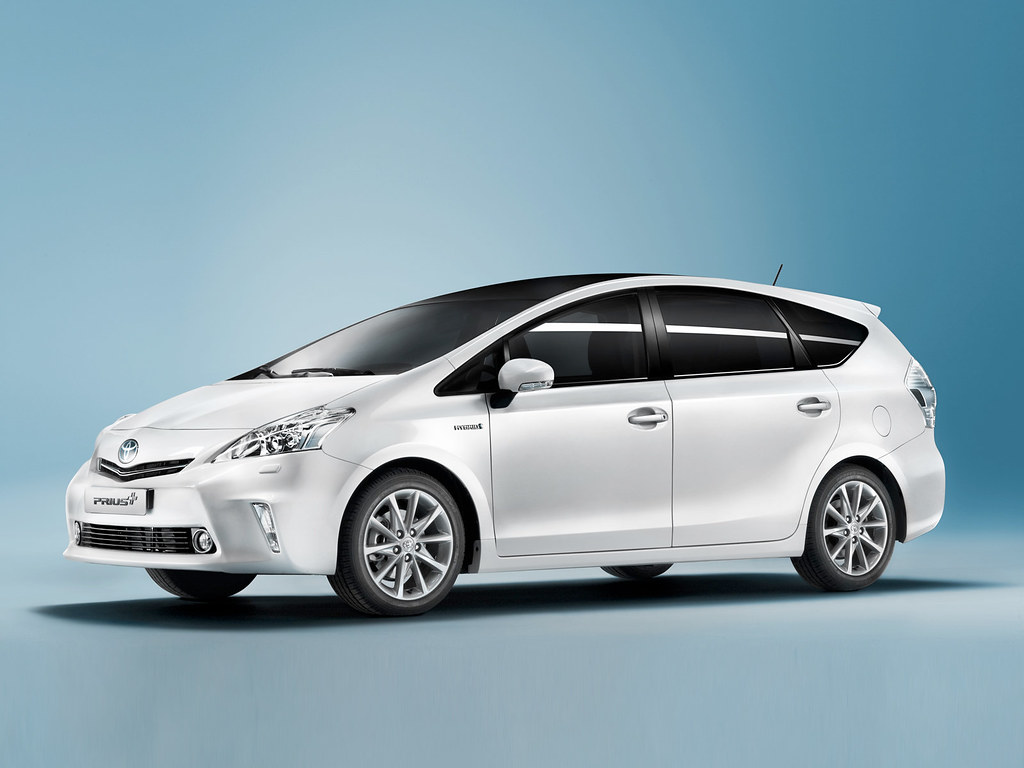
8. **Toyota vs. Honda Drove Everyday Reliability and Efficiency**Beyond the thunderous roar of muscle cars and the sleek lines of supercars, a quieter yet equally impactful rivalry has shaped the automotive landscape: the continuous competition between Toyota and Honda. These two Japanese giants have long been locked in a strategic battle focused not on outright speed or ostentatious luxury, but on delivering unparalleled reliability, exceptional efficiency, and practical, dependable cars for the global masses. This sustained commitment to accessible quality has, in turn, spurred a remarkable stream of innovations that directly benefit millions of drivers across the world every single day.
Toyota’s pioneering emphasis on meticulous quality control and highly efficient manufacturing processes set a formidable benchmark early on, effectively compelling Honda to elevate its own engineering prowess considerably. This healthy competitive dynamic led Honda to respond with significant advancements, particularly in its engine design and fuel economy optimization. The result of this tireless pursuit of excellence was a series of iconic vehicles, such as the perennially popular Toyota Corolla and the versatile Honda Civic, both of which became industry standards for remarkable longevity and impressively low running costs, forever changing consumer expectations for mainstream vehicles.
This rivalry’s profound impact extends far beyond mere sales figures; it has fundamentally redefined what consumers expect from an everyday vehicle. Through their relentless pursuit of improvement, Toyota and Honda have provided consumers with a wealth of choices in affordable, exceptionally dependable, and increasingly environmentally conscious vehicles. Their unwavering dedication to practical innovation underscores how vital competition, even in seemingly less glamorous segments, remains a powerful catalyst for progress, ultimately benefiting a vast global driving population.
Read more about: Unearthing Automotive Relics: Why Bench Seats Vanished—And 12 Modern Vehicles Still Keeping the Dream Alive
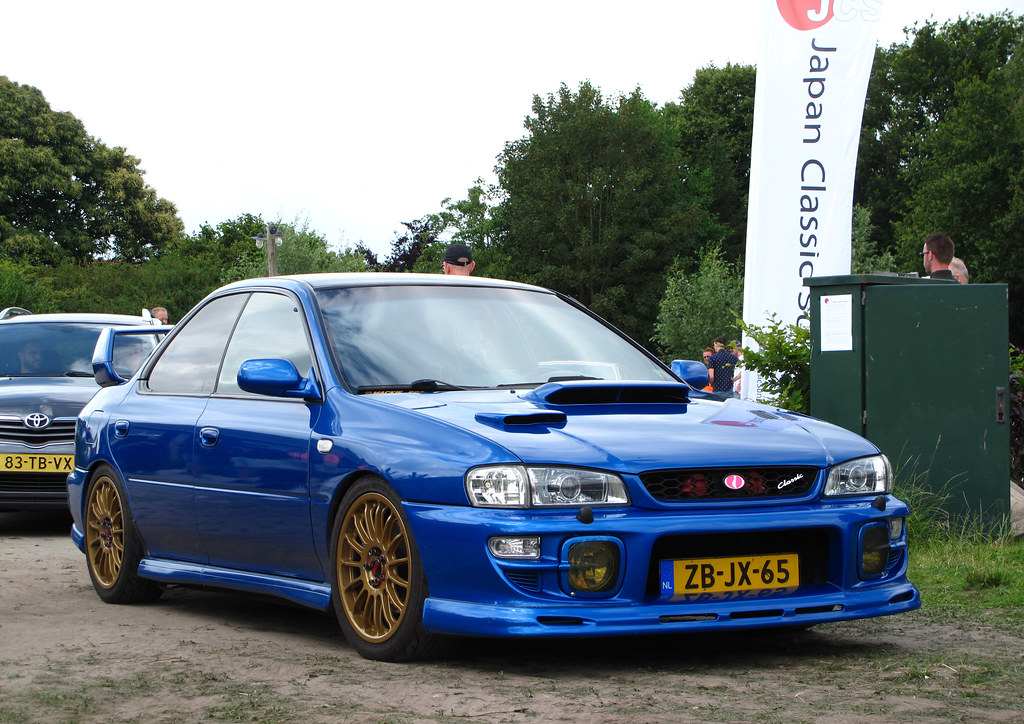
9. **Subaru vs. Mitsubishi Made Rally Tech Mainstream**The World Rally Championship (WRC) served as the intense proving ground for one of the most exciting rivalries in automotive history: Subaru versus Mitsubishi. This head-to-head battle on dirt, snow, and tarmac didn’t just produce legendary rally cars; it directly translated advanced all-wheel-drive systems and potent turbocharged engines from the demanding world of motorsport into incredibly accessible, everyday road cars. Models like the Subaru Impreza WRX and the Mitsubishi Lancer Evolution didn’t just become icons; they democratized rally-bred performance for enthusiasts worldwide.
Each brand pushed the other relentlessly to refine every aspect of their performance vehicles. This included meticulous enhancements to their sophisticated drivetrains, precision-tuned chassis, and crucial safety features. The goal was simple: to make all-weather performance not just possible, but genuinely accessible and exhilarating for the masses. This constant innovation elevated both brands, setting new benchmarks for vehicle dynamics and ensuring that high-performance driving could be enjoyed confidently, regardless of challenging road conditions or adverse weather.
The profound influence of this rivalry transcended mere sports sedans. The technological advancements, particularly in advanced all-wheel-drive and turbocharged powertrains, rapidly trickled down into other vehicle segments, including the burgeoning crossover and SUV markets. This demonstrated definitively that a touch of rally spirit and engineering ingenuity could indeed go a long way in enhancing the performance and capability of a broader range of vehicles, impacting the entire industry’s approach to vehicle dynamics.
Delving into their WRC dominance further highlights the intensity of this rivalry. Mitsubishi claimed four World Rally Championship titles between 1996 and 1999, showcasing their formidable engineering might. Not to be outdone, Subaru secured three titles in 1995, 2000, and 2001, proving their consistent prowess. The similarity in their street models, exemplified by the Mitsubishi Evo III and the Subaru Impreza, was striking: both boasted nearly identical rear spoilers, formidable 2-liter engines, and over 260 horsepower, making choosing between them a truly passionate debate for enthusiasts, fueled by their uncanny resemblance and competitive spirit.
Car Model Information: 2024 Buick Enclave Premium FWD
Name: Subaru WRX
Caption: 2022 Subaru WRX GT
Aka: Subaru Impreza WRX (1992–2014)
Production: 1992–2014 (Impreza-based models),2015–present (standalone models)
Assembly: Ōta, Gunma
Layout: Front-engine, four-wheel-drive layout
Manufacturer: Subaru
Related: Subaru Levorg,Subaru WRX STI
Class: Sport compact
BodyStyle: Sedan (automobile)
Categories: 2020s cars, All-wheel-drive vehicles, All Wikipedia articles written in British English, All articles with unsourced statements, Articles with short description
Summary: The Subaru WRX is an all-wheel drive sport compact car manufactured by the Japanese automaker Subaru, originally based on the Impreza created for the World Rally Championship in 1992. Subaru claimed the name WRX stands for “World Rally eXperimental”. Starting with the 2015 models, the WRX lineup has been split from the Impreza, with a different body style that is not offered as an optional hatchback/wagon, being introduced as the separate Levorg model.
Get more information about: Subaru WRX
Buying a high-performing used car >>>
Brand: Subaru Model: Impreza WRX
Price: $29,997 Mileage: 37,001 mi.
Read more about: Remember These? 14 Iconic Rides That Once Ruled the Roads But Now Just Feel… Different
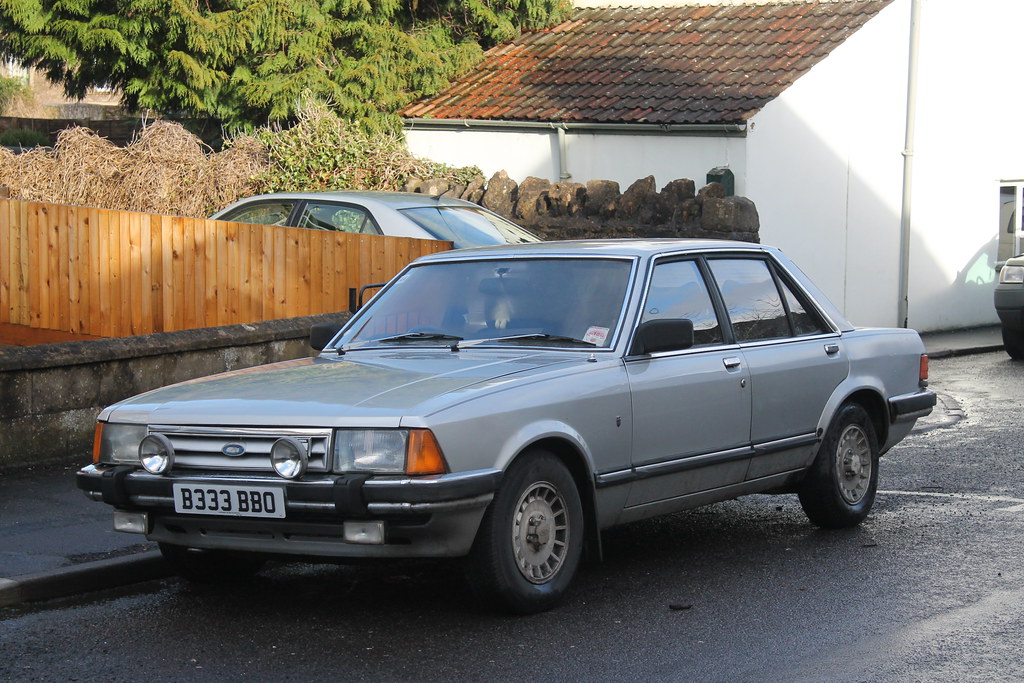
10. **Ford vs. Ferrari Sparked a Race to Engineering Greatness**Few automotive rivalries possess the epic, almost mythical quality of the clash between Ford and Ferrari, a story deeply rooted in the 1960s. This legendary confrontation began with a failed buyout bid when Henry Ford II sought to acquire Enzo Ferrari’s iconic company. When the deal spectacularly collapsed at the last moment, reportedly due to Ferrari’s refusal to relinquish control over his cherished racing team, a personal insult ignited a corporate vendetta. A bruised and determined Henry Ford II vowed to achieve one singular, audacious goal: to dethrone Enzo Ferrari at the prestigious 24 Hours of Le Mans, the ultimate endurance race.
Ford poured unprecedented resources and engineering talent into this mission, culminating in the development of the now-iconic GT40. This formidable machine was meticulously engineered for one purpose and one purpose only: to beat Ferrari at their own game on the grueling Le Mans circuit. The sheer determination and industrial might of Ford paid off spectacularly, leading to a historic clean sweep of victories at Le Mans from 1966 to 1969. This unprecedented dominance not only fulfilled Ford’s ambition but also etched the GT40 into the annals of motorsport history as a symbol of American engineering might.
This rivalry’s impact extended far beyond the race track. The intense competition spurred both companies to achieve remarkable feats of innovation. Ford introduced cutting-edge advancements in aerodynamics and lightweight materials, pushing the boundaries of vehicle construction. Ferrari, in turn, redoubled its efforts on engine performance and reliability, ensuring its cars remained formidable contenders. The GT40’s revolutionary mid-engine layout and its endurance-focused engineering were not just for racing; they significantly influenced the design and development of future sports cars, setting new, higher standards for both brands and the wider automotive industry.
Even today, the echoes of this legendary rivalry resonate throughout the automotive world. The relentless pursuit of speed, precision, and engineering excellence by carmakers globally can be directly linked to the transformative pressure generated by the Ford vs. Ferrari saga. It stands as a powerful testament to how a deeply personal and corporate clash can become a powerful catalyst for technological breakthroughs that redefine the very essence of performance cars and leave an indelible mark on automotive history.
Read more about: 12 Legendary Automotive Rivalries That Revolutionized the Roads and Fueled Innovation

11. **Nissan vs. Toyota in the Quest for Affordable Performance**While Ford and Ferrari battled for ultimate track supremacy, another compelling rivalry unfolded across the Pacific, driven by a different, yet equally significant, objective: to deliver exhilarating and genuinely affordable performance cars to the masses. Nissan and Toyota have long engaged in a spirited competition to make the thrill of driving accessible, especially during the 1970s and 80s when the demand for exciting, yet practical, sports cars surged. This enduring quest gave birth to legendary models like the iconic Nissan Z series and the formidable Toyota Supra, each pushing the limits of what a reasonably priced sports car could truly achieve.
In their pursuit of this accessible performance, both brands tirelessly experimented with a myriad of advanced technologies. This included pioneering innovations in turbocharging to extract more power from smaller engines, meticulous lightweight construction methods to enhance agility and efficiency, and sophisticated suspension setups to improve handling dynamics. This continuous back-and-forth not only sharpened their individual engineering capabilities but also fostered a vibrant ecosystem of innovation that directly benefited consumers eager for high-performance vehicles without the supercar price tag.
The impact of this rivalry went far beyond the showrooms of Japan. It inspired an entire wave of Japanese performance cars that quickly became global icons, captivating enthusiasts and tuners around the world. These vehicles cultivated a passionate community dedicated to modifying and perfecting their affordable performance machines. This enduring competition ensured that the market for accessible, fun-to-drive sports cars would continue to thrive, proving definitively that one does not need a supercar budget to experience genuine excitement and pure driving pleasure behind the wheel.
Car Model Information: 2024 Buick Enclave Premium FWD
Name: Nissan Z-car
Caption: 1970 Datsun 240Z (S30)
Aka: Nissan Fairlady Z (Japan)
Manufacturer: Nissan
Production: October 1969 – present
Assembly: ubl
Class: Sports car,Grand tourer
Layout: Front-engine, rear-wheel-drive layout,Front-engine, rear-wheel-drive layout#Front mid-engine, rear-wheel-drive layout
Predecessor: Datsun Sports
Categories: 1970s cars, 1980s cars, 1990s cars, 2000s cars, 2010s cars
Summary: The Nissan Z-series is a model series of sports cars manufactured by Nissan since 1969.
The original Z was first sold on October of 1969 in Japan as the Nissan Fairlady Z (Japanese: 日産・フェアレディZ, Hepburn: Nissan Fearedi Zetto) at Nissan Exhibition dealerships that previously sold the Nissan Bluebird. It was initially marketed as the Datsun 240Z for international customers. Since then, Nissan has manufactured seven generations of Z-cars, with the most recent—simply known as the Nissan Z—in production since 2022.
Main rival cars in the Japanese market included the Toyota Celica, Toyota Supra, Mitsubishi 3000GT and Mazda RX-7.
The earlier models of the Nissan Z were built at the Nissan Shatai plant in Hiratsuka until 2000, while the later models (350Z and 370Z) are built at Oppama (2002–2004) and Tochigi (2004–present). Known for their looks, reliability, performance and affordability, every Z car has been sold in Japan as the Fairlady Z and elsewhere under the names Nissan Fairlady Z (S30), Nissan Fairlady Z (S130), Nissan 300ZX, Nissan 350Z, Nissan 370Z and Nissan Z.
Get more information about: Nissan Z-car
Buying a high-performing used car >>>
Brand: Nissan Model: Z series
Price: $29,997 Mileage: 37,001 mi.
Read more about: Unleash the Beasts: 12 Simple 4x4s That Absolutely Dominated as Off-Road Kings, Then and Now!

12. **BMW vs. Mercedes-Benz Elevated Luxury and Technology**In the realm of German engineering, few rivalries are as deeply ingrained and fiercely contested as that between BMW and Mercedes-Benz. For decades, these two titans have been trading jabs, not just for market share, but for supremacy in luxury, performance, and cutting-edge technology. Each brand boasts an incredibly loyal following, with BMW devotees championing “the ultimate driving machine” for its sporty dynamics, while Mercedes aficionados often emphasize unparalleled comfort, timeless prestige, and pioneering safety. This ongoing battle of philosophies has led to a constant and beneficial game of one-upmanship, continually raising the bar for the entire premium automotive segment.
BMW’s unwavering focus on precise sporty handling, exhilarating driving dynamics, and the development of innovative, high-performance engines significantly compelled Mercedes-Benz to elevate its own game. Mercedes responded with sophisticated advancements in its plush interiors and groundbreaking safety features. Conversely, Mercedes’ early adoption and pioneering development of critical safety systems like anti-lock brakes (ABS) and airbags pushed BMW to invest heavily in advanced driver-assist technologies and the meticulous refinement of its ride quality, seeking to blend sporty handling with supreme comfort seamlessly.
The magnificent outcome of this decades-long rivalry is that both brands now offer vehicles that seamlessly blend high performance, exquisite luxury, and state-of-the-art technology in ways that set definitive industry benchmarks. Their cars are not merely modes of transport; they are highly sophisticated machines packed with innovative features, unparalleled comfort, and engaging driving experiences. This competitive drive has ensured that discerning drivers are consistently presented with vehicles that represent the pinnacle of automotive engineering and design.
The impact of this intense competition transcends the cars themselves, influencing a much broader spectrum of the automotive world. Their rivalry has significantly shaped developments in motorsport, driven forward the evolution of electric vehicles, and even played a role in the ongoing advancements in autonomous driving technologies. Both automakers also engage in playful banter, often acknowledging each other’s greatness while relentlessly striving to outsell one another. Notably, Mercedes’ parent company, Daimler AG, rebranded to Mercedes-Benz AG in 2022, highlighting the success of its passenger vehicles, while BMW has taken an upper hand in the rapidly evolving EV production with compelling models like the iX and 740e, ensuring the rivalry remains as dynamic as ever.
This continuous vying for supremacy ensures that drivers consistently get the best of both worlds: thrilling engagement behind the wheel combined with the very latest in-car technology and luxurious refinement, constantly pushing the boundaries of what a premium vehicle can offer.
Read more about: Beyond the Badge: Unpacking the ‘Stuck-Up’ Stereotypes of 9 Luxury Car Owners

13. **Bentley vs. Rolls-Royce**In the rarefied air of ultra-luxury motoring, the rivalry between Bentley and Rolls-Royce is as fascinating as it is elegant. For many decades, these two storied British marques were, remarkably, one and the same, united under a single corporate banner. However, an eventful and rather dramatic separation in 1998, reportedly due to creative differences and strategic divergences, immediately ignited a new and distinct rivalry. This divorce, rather than diminishing them, paradoxically worked out incredibly well for both brands, allowing them to forge distinct identities in the competitive high-end market.
Following their split, Bentley became an integral part of the Volkswagen AG empire, a move that significantly influenced its strategic direction. Under Volkswagen’s stewardship, Bentley has increasingly gravitated towards a more speed-oriented and performance-focused philosophy, as Volkswagen sought to establish a more prominent name for itself in the elite sports car arena. This shift allowed Bentley to infuse its traditional luxury with a more dynamic driving character, appealing to those who desire both opulent comfort and exhilarating performance.
Rolls-Royce, on the other hand, found its new home under the wing of BMW. With BMW already possessing a robust portfolio of high-performance vehicles, Rolls-Royce was able to steadfastly maintain its classic, grand, and imposing aesthetic from the 20th century, focusing on unparalleled comfort, silence, and traditional prestige. While the overt tensions that characterized their initial separation have largely settled, a subtle yet undeniable competitive spirit persists. These two automotive titans, despite their differing paths, continue to vie for the affections of the world’s most discerning clientele, ensuring the pinnacle of luxury motoring remains a dynamic and innovative space.
Read more about: From Bulletproof to Secret Escape: 12 Custom SUV Secrets That Keep A-Listers Safe and Sound
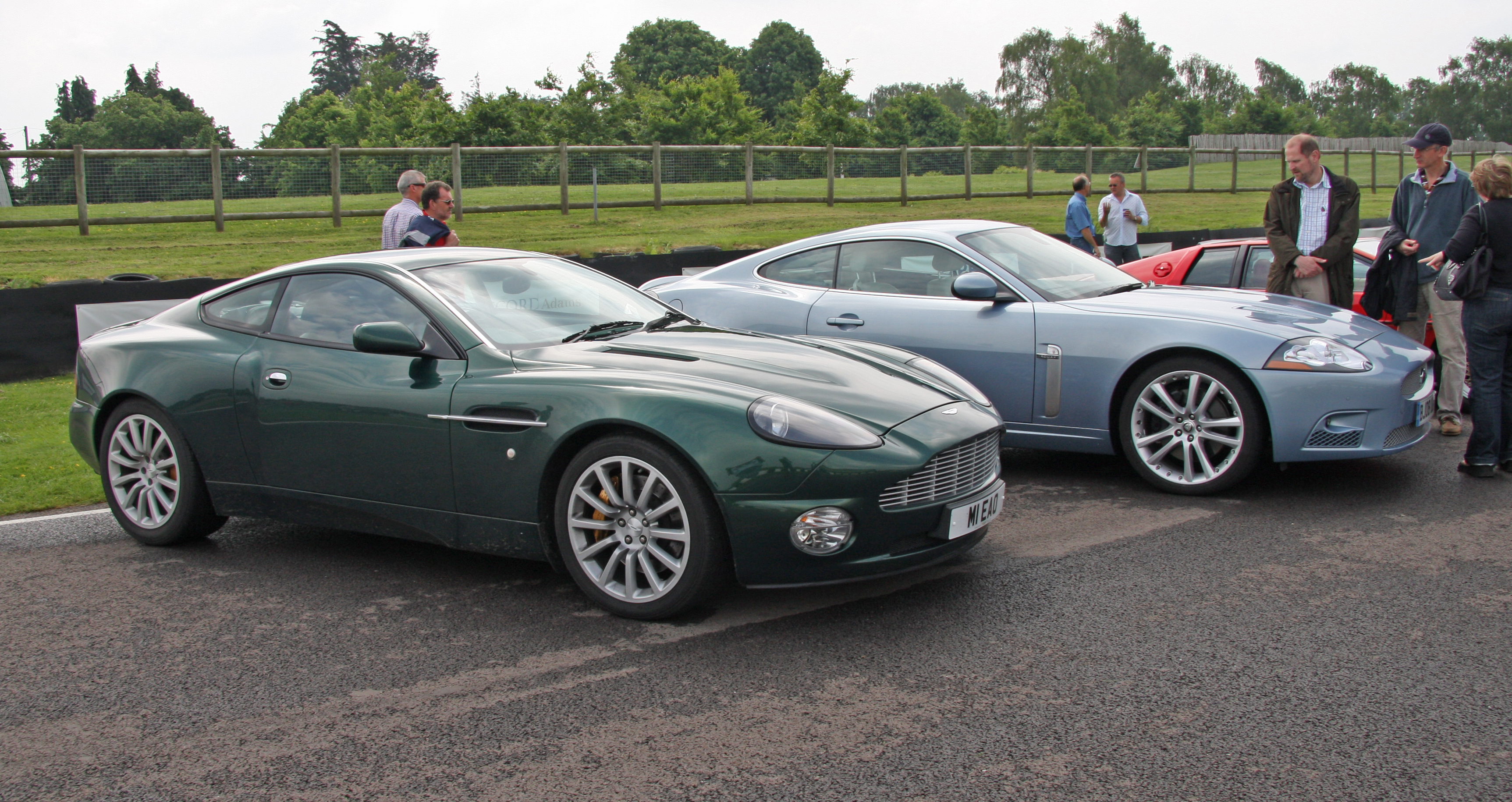
14. **Jaguar vs. Aston Martin**The landscape of British sports cars has long been graced by the elegant yet fierce rivalry between Jaguar and Aston Martin. During the 20th century, when both brands operated as independent manufacturers, they were locked in a captivating struggle to be recognized as the quintessential face of British high-performance motoring. Models like Jaguar’s alluring XKR8 and Aston Martin’s iconic DB7 stood as powerful symbols of this competition, each showcasing a unique blend of sophistication, power, and handling. This era saw both brands pushing the boundaries of design and engineering, yet neither managed to secure a definitive, lasting advantage over the other.
It is worth noting that while they were fierce competitors, both Jaguar (until 2008) and Aston Martin (until 2007) were, for a period, owned by Ford. However, their most intense competitive era as direct rivals truly flourished when they were independent, prior to and after this shared ownership. During this time, the contest for prestige and performance was pure, driven by distinct British automotive philosophies. Their battles were not just about sales but about embodying national pride in automotive excellence, creating some of the most beautiful and potent cars of their time.
Even in the present day, car enthusiasts maintain the tradition of constantly comparing new releases from Jaguar and Aston Martin, a testament to the deep respect and lasting legacy of their historical rivalry. Jaguar continues to captivate audiences with its popular F-Type series, upholding its reputation for dynamic performance and striking design. Meanwhile, Aston Martin is experiencing an unprecedented surge in production, churning out more vehicles than at any other point in its illustrious history. This ongoing comparison ensures that both marques remain at the forefront of automotive innovation and desirability, continually pushing each other to deliver exceptional British sports cars to a global audience.
Read more about: Unpacking the U-Turn: 14 Key Reasons EV Owners Are Considering a Switch Back to Internal Combustion
As we’ve journeyed through these enduring rivalries, it becomes abundantly clear that competition is the lifeblood of the automotive industry. It’s a force that not only drives technological leaps and daring design innovations but also ignites the passion of engineers, designers, and enthusiasts alike. From the strategic positioning of luxury marques to the accessible performance of everyday vehicles, these clashes have continuously redefined possibilities. The real winners, ultimately, are the drivers and the evolving roads themselves, constantly enriched by the relentless pursuit of automotive greatness.

